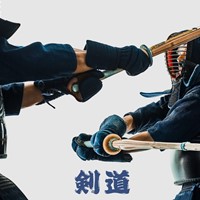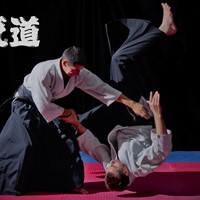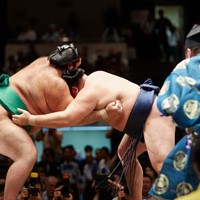What is Sumo Wrestling?
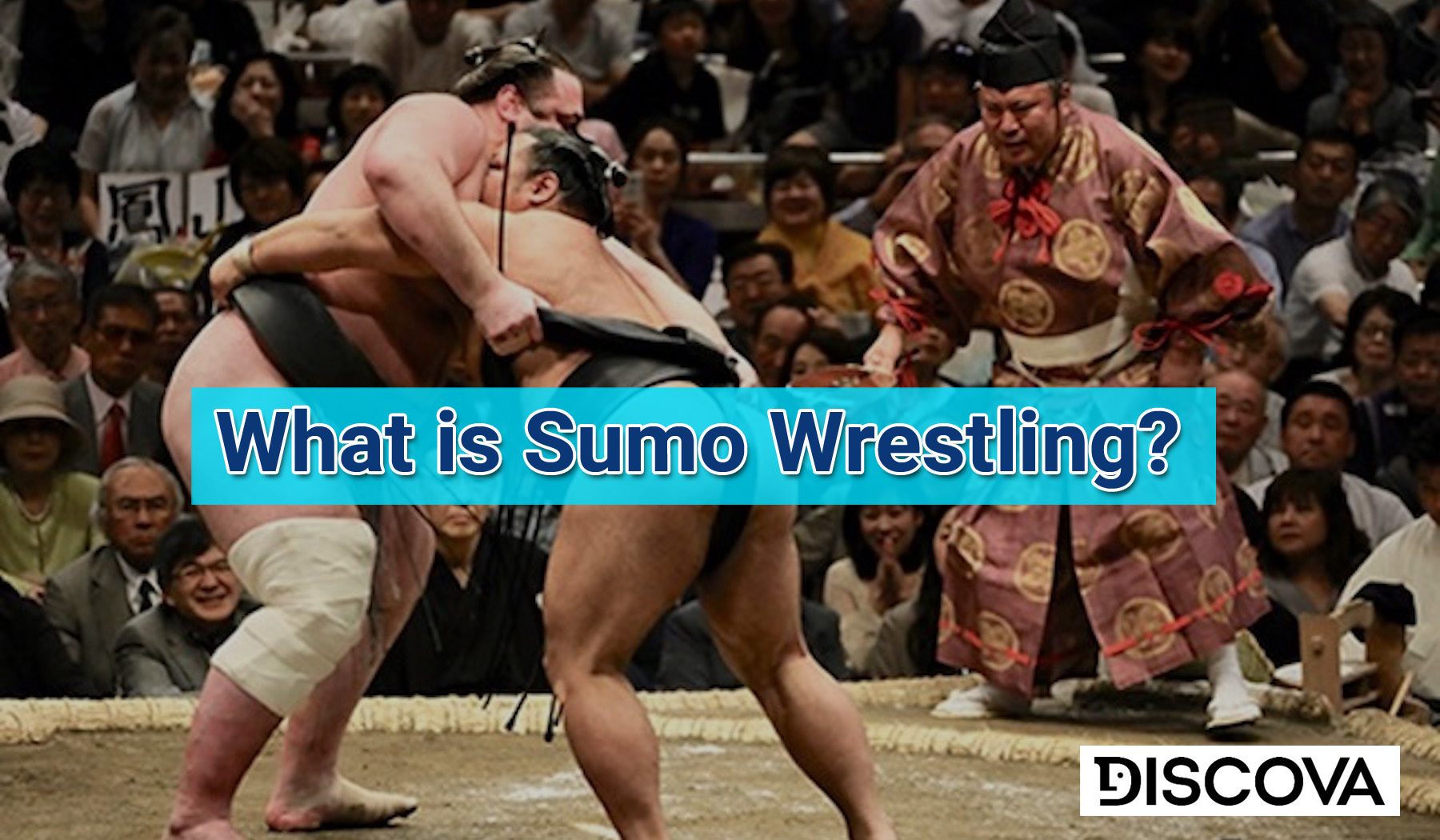
This article is contributed by DISCOVA.
Sports are a significant part of Japanese culture. Both traditional martial art such as Karate, Kendo and western import like Baseball are popular with both many participants and spectators. Despite the huge popularity of those sports, Japan national sport remains Sumo wrestling. An ancestral martial art perpetuated by a small group of athletes.
Many ancient traditions are preserved in Sumo and many ritual elements dating from its connection with Shinto are preserved today. Even if Sumo is very well known across the globe, very few are aware of its origin, history, and traditions. Let’s jump into Sumo’s world!
> Sumo Wrestling in Japan : Taking in Japan’s Most Famous Sport
A brief history of Sumo
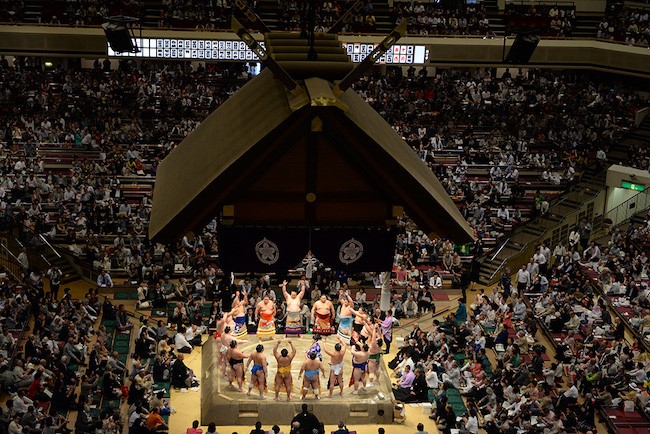
Sumo origin is still unclear even today. Prehistory wall painting depict Sumo as an agricultural ritual dance performed for honoring the Gods. The first mention of Sumo in Japanese literature (in 720) date the first Sumo match to the year 23BC, however the first historically attested matches were held in 642 at the court of the Empress.
At that time, Sumo is strongly tied to Shinto religion. Matches are performed within shrines perimeter and the whole Sumo apparatus is inspired from Shinto Priest outfit.
The power struggle between the Emperor and the Shogun has influenced Japanese history and society for over 550 years and Sumo was not an exception. With the collapse of the emperor authority in the 12th century, Sumo lost its aura. From a sacred ritual performed in from of the emperor, it morphed into an element of Samurai military training then became a popular event for the masses.
Successful Sumotori started to gain the favors of the ruling class, up to the point where the Shogun himself held tournaments for his enjoyment.
To avoid chaos and injuries, the Sumo ring as we know is invented. But it is not enough for pacifying the capital, Edo. Swamped by wild fighting on the streets, the authorities have no other choice than banning Sumo. Sumo returns to where it came from, as matches are only authorized within shrine’s boundaries.
Today we can witness the relic of that period, if you visit Setagaya Hachiman shrine in Tokyo, you can see the ring or Dohyo where Sumo used to fight.
Originally an anarchic sport, an official sumo organization is developed. The concept of Heya also called Beya (sumo stable where Sumo trains) is put into place as well as the role of referee.
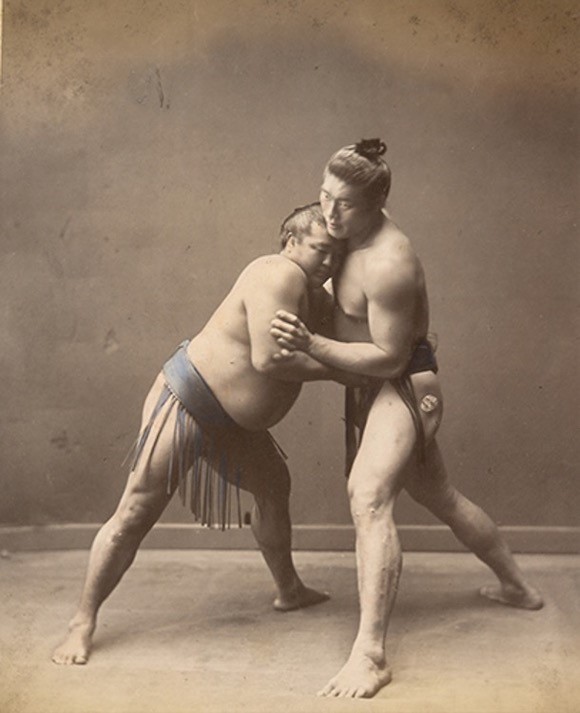
The restauration of the emperor power in 1868 shatters Sumo universe. Sumo suddenly loses the support brought by local lords. Recently open to the world, the whole Japan is focused into becoming a modern country as fast as possible. Sumo is seen as an embarrassing and obsolete relic for the following 20 years.
Greatly appreciated by the people, Meiji Emperor organizes a big Sumo tournament in 1884. From that moment Sumo becomes a national symbol and contribute to the nationalist sentiment following military successes in southwest Asia.
Stronger than ever, the Japan sumo Association increases the number of annual tournaments from two to four in 1925 then added another 2 in 1958. Today, the 6 grand tournaments are held in Tokyo, Osaka and Fukuoka.
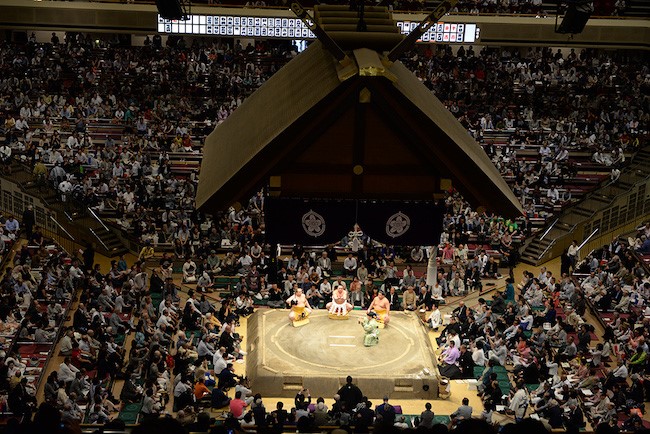
Life of a Sumo
Becoming a sumo is a life commitment starting at a young age, apprentice join a sumo beya (training stable) after leaving junior high school. Interestingly, transfer between stable is not possible except under were specific circumstances (if the stablemaster dies or if the stable stop operating).
The sumotori life is highly regimented by the Japan sumo association, and breaking the rules results in fines and suspensions for a fixed number of tournaments.
For instance, sumos are not allowed to drive a car, they must adopt the traditional samurai hairstyle from Edo period, additionally, they must wear traditional clothing in public regardless the weather and the circumstances. However higher-ranking sumo have more choice.
Stable life also brings many rules, and all sumo are expected to follow them. Depending on their rank, sumo must wake up from 5 to 7 AM and start training. Lower ranking sumo have many chores to do from early morning. For instance, preparing elders meals, cleaning, preparing bath or assisting them during training sessions. Basically, the sumo world is divided between low-ranking sumo who are serving and higher-ranking ones who are served. Sumo recruit life is harsh and unforgiving.
By the way, do you know how sumo achieve such massive and impressive style? In order to put a lot of weight, sumo avoids eating breakfast, they start training soon after waking up and then eat huge quantities of Chanko Nabe (a dish similar with hot pot). Meals are followed with naps which helps to produce fat tissues.
Why not discovering Sumo’s world by yourself?
As you can see, sumo universe is filled with traditions and ceremonials. Even though sumo is the national sports, not so many people have approached and talked to a Sumo.
Why not unveiling the curtain and discover that universe by yourself and join a guided tour in sumo’s heartland where the most prestigious tournaments are held?
Get up close and personal with two former Sumo wrestlers as they demonstrate and explain some of the training and competition techniques of this fascinating sport. At the end, you will even have the opportunity to challenge them to a friendly Sumo fight!
Next, sit down to a bowl of hearty chanko nabe for lunch, an authentic hot pot dish eaten by wrestlers in training. Rich with chicken meat, fish, and tofu as well, this dish is the secret behind sumo’s strength. During this time, the sumo will answer any questions you may have. This Shared Group Experience is a unique opportunity for creating a lasting memory and discover more about Japanese culture even if you are a long-term resident of Japan.
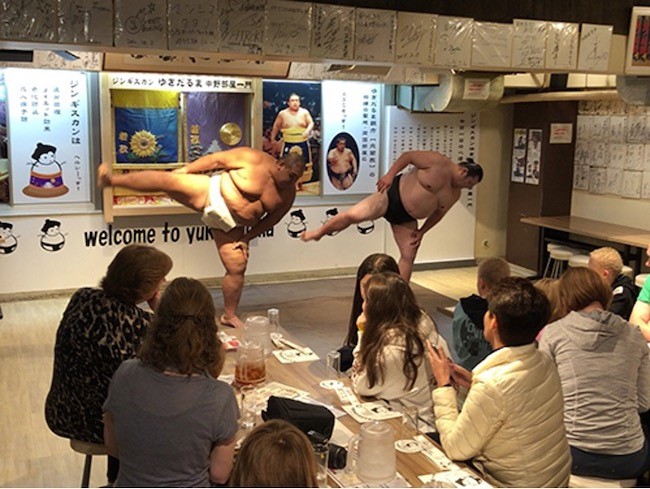
This tour includes the following:
- An English-speaking guide.
- Sumo wrestling demonstration.
- Meet, challenge and share with a former sumo wrestler.
- Chanko nabe meal (allergies and dietary restriction should be notified at least 2 days in advance).
- 2 hours tour, available only on Thursday.
Feel free to reach out if you are interested in such a tour or for organizing your trip in Japan. Contact DISCOVA with the name and age of the participants as well as your preferred date for joining the tour. The team in Tokyo will be delighted to assist you.

